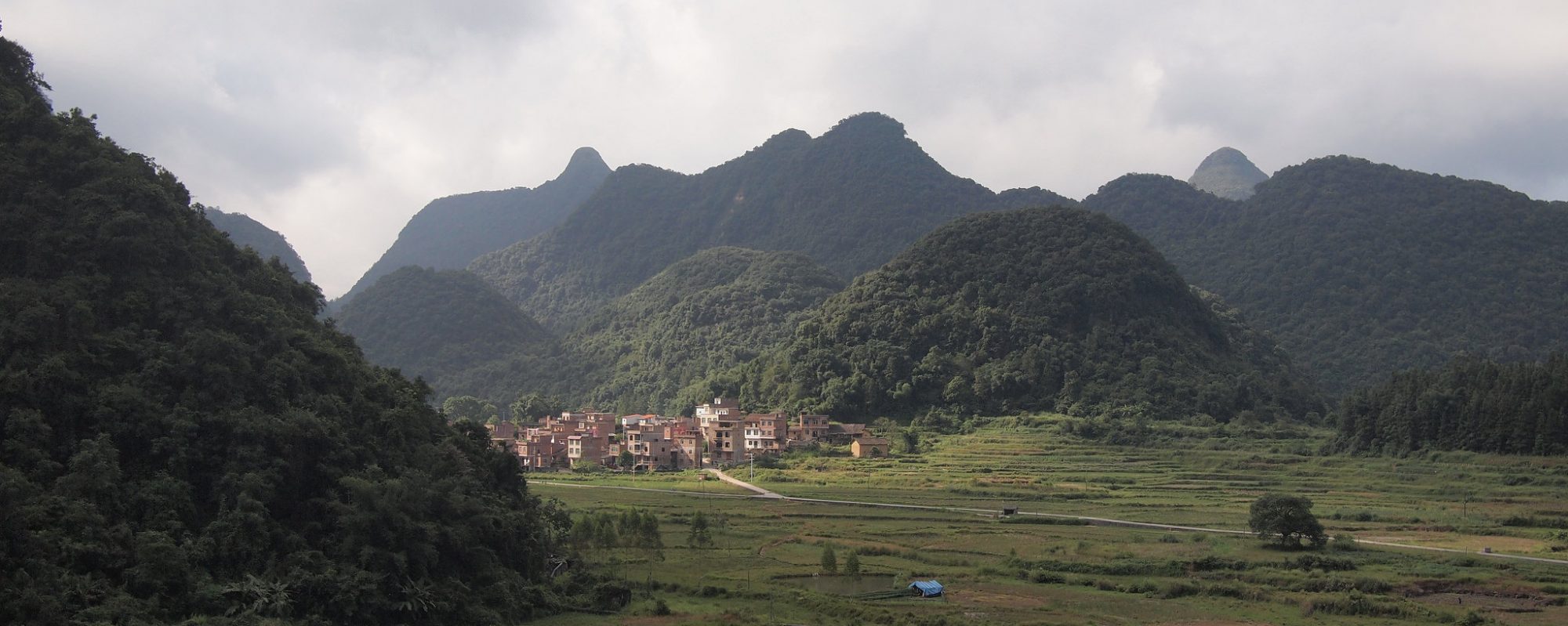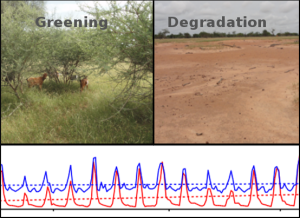Our new study uses unprecedented data sources to measure vegetation carbon stock dynamics at continental scale. The study demonstrates that over the African continent, the net carbon balance is negative for 2010-2016, and that most of the carbon losses occurred in dryland savannahs. The results were published in the journal Nature Ecology and Evolution. The … Continue reading A new tool to monitor aboveground vegetation carbon stocks: first application to the African continent
Tag: biomass
Integrating meteorological data in biomass prediction models
Diouf, A.A.; Hiernaux, P.; Brandt, M.; Faye, G.; Djaby, B.; Diop, M.B.; Ndione, J.A.; Tychon, B. Do Agrometeorological Data Improve Optical Satellite-Based Estimations of the Herbaceous Yield in Sahelian Semi-Arid Ecosystems? Remote Sens. 2016, 8, 668. Quantitative estimates of forage availability at the end of the growing season in rangelands are helpful for pastoral livestock … Continue reading Integrating meteorological data in biomass prediction models
Remote sensing of vegetation in drylands: Evaluating vegetation optical depth (VOD) using NDVI and in situ data over Sahel
Tian, F.; Brandt, M.; Liu, Y. Y.; Verger, A.; Tagesson, T.; Diouf, A. A.; Rasmussen, K.; Mbow, C.; Wang, Y.; Fensholt, R. Remote sensing of vegetation dynamics in drylands: Evaluating vegetation optical depth (VOD) using AVHRR NDVI and in situ green biomass data over West African Sahel. Remote Sensing of Environment 2016, 177, 265–276. … Continue reading Remote sensing of vegetation in drylands: Evaluating vegetation optical depth (VOD) using NDVI and in situ data over Sahel
AGU 2015
We had three presentations at this years AGU fall meeting in San Francisco. Find the posters and presentations as PDFs here (the copyright is with the authors): Feng Tian, Martin Brandt, Yi Liu, Rasmus Fensholt. Remote sensing of biomass dynamics in drylands: Evaluating vegetation optical depth (VOD) using AVHRR NDVI and in situ data. AGU … Continue reading AGU 2015
Fodder Biomass Monitoring in Sahelian Rangelands Using Phenological Metrics from FAPAR Time Series
From: Diouf, A.A., Brandt, M., Verger, A., Jarroudi, M.E., Djaby, B., Fensholt, R., Ndione, J.A., Tychon, B., 2015. Fodder Biomass Monitoring in Sahelian Rangelands Using Phenological Metrics from FAPAR Time Series. Remote Sensing 7, 9122–9148. doi:10.3390/rs70709122 Livestock farming constitutes the most widespread human activity and the dominant land use in rangeland ecosystems. At a global … Continue reading Fodder Biomass Monitoring in Sahelian Rangelands Using Phenological Metrics from FAPAR Time Series
Ground- and satellite-based evidence of the biophysical mechanisms behind the greening Sahel
Making use of 27 years of ground measurements, we were able to find evidence of the role of trees and grass on the greening of the Senegalese Sahel. This was made possible by a close collaboration with our colleagues from the CSE, the Centre de Suivi Ecologique in Dakar. Moreover, woody species abundance data provided … Continue reading Ground- and satellite-based evidence of the biophysical mechanisms behind the greening Sahel
Local Vegetation Trends in the Sahel of Mali and Senegal Using Long Time Series FAPAR Satellite Products and Field Measurement (1982–2010)
We finally published an article dealing with local vegetation trends in the Sahel and data quality of long term time series (GEOV1 and GIMMS3g). It is published in the open access journal "Remote Sensing" and can be downloaded for free: http://www.mdpi.com/2072-4292/6/3/2408 Brandt, Martin; Verger, Aleixandre; Diouf, Abdoul A.; Baret, Frédéric; Samimi, Cyrus. 2014. "Local Vegetation … Continue reading Local Vegetation Trends in the Sahel of Mali and Senegal Using Long Time Series FAPAR Satellite Products and Field Measurement (1982–2010)





